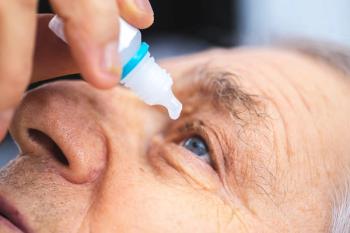
Nicox releases new analysis on Mont Blanc Phase 3 trial for NCX 470 for patients with OAG
NCX 470 0.1% achieved an intraocular pressure of less than or equal to 18 mmHg compared to latanoprost 0.005% in the trial.
International ophthalmology company Nicox SA highlighted pre-planned analysis from its NCX 470 Mont Blanc Phase 3 clinical trial in a poster presentation given at the 2025 American Glaucoma Society (AGS) Annual Meeting, held from February 26-March 2 in Washington.1 The poster titled “Diurnal Intraocular Pressure Control Responder Analysis with NCX 470 Vertsus Latanoprost in the Phase 3 Mont Blanc Trial” presented data that demonstrates that more patients on NCX 470 0.1% achieved an intraocular pressure (IOP) of less than or equal to 18 mmHg compared to latanoprost 0.005%, according to a news release.
“These data provide another example of where NCX 470 is differentiated from the standard-of-care for intraocular pressure reduction, latanoprost. In this analysis, we demonstrated that more patients achieve intraocular pressure of less than or equal to 18 mmHg on NCX 470 than on latanoprost. In addition, the mean percentage reduction in intraocular pressure was greater in patients on NCX 470 compared to those on latanoprost.” said Doug Hubatsch, chief scientific officer of Nicox, in the release. “We also look forward to announcing the results of the Whistler trial, investigating the mechanism of action of NCX 470, shortly, and the second pivotal Phase 3 trial, Denali, in Q3 of this year.”
Additionally, data collected from the Mont Blanc trial also found that in eye that had an initial IOP of ≤ 28 mmHg, the IOP-lowering effect from baseline was statistically significantly greater for NCX 470 compared to latanoprost at the majority of timepoints measured. NCX 470 also demonstrated a consistent lowering of IOP regardless of baseline IOP, whereas the reduction in IOP with latanoprost was dependent on the baseline IOP. The proportion of patients who received NCX 470 with an IOP reduction of greater than 10 mmHg from baseline was statistically significantly greater when compared to patients on latanoprost.1
Ultimately, the Mont Blanc trial demonstrated that NCX 470 met the efficacy standard for approval in the US, with non-inferiority to latanoprost with an IOP reduction of 8.0 to 9.7 mmHg, according to the release. However, NCX 470 failed to meet statistical superiority to latanoprost in a pre-specified secondary efficacy analysis of time-matched change from baseline IOP. NCX 470 did should numerical superiority to latanoprost at all time points and with statistical significance (p<0.049) at 4 out of 6 timepoints.1
NCX 470 is a novel nitric oxide (NO)-donating bimatoprost eye drop that leverages the IOP-lowering effects of NO and prostaglandin analogs (PGAs) and is designed to release bimatoprost and NO into the eye to lower IOP by 2 different pathways in patients with open-angle glaucoma or ocular hypertension. NCX 470 incorporates Nicox’s proprietary NO-donating research platform and bimatoprost in a single molecule.2
References
Nicox presents new analysis from the NCX 470 Mont Blanc trial and provides development update. News release. Globe Newswire. March 3, 2025. Accessed March 5, 2025.
https://www.globenewswire.com/news-release/2025/03/03/3035225/0/en/Nicox-Presents-New-Analysis-from-the-NCX-470-Mont-Blanc-Trial-and-Provides-Development-Update.html Portfolio and disease areas. Nicox SA. Accessed March 5, 2025.
https://www.nicox.com/pipeline-markets-and-science/#product-ncx-470
Newsletter
Want more insights like this? Subscribe to Optometry Times and get clinical pearls and practice tips delivered straight to your inbox.








































